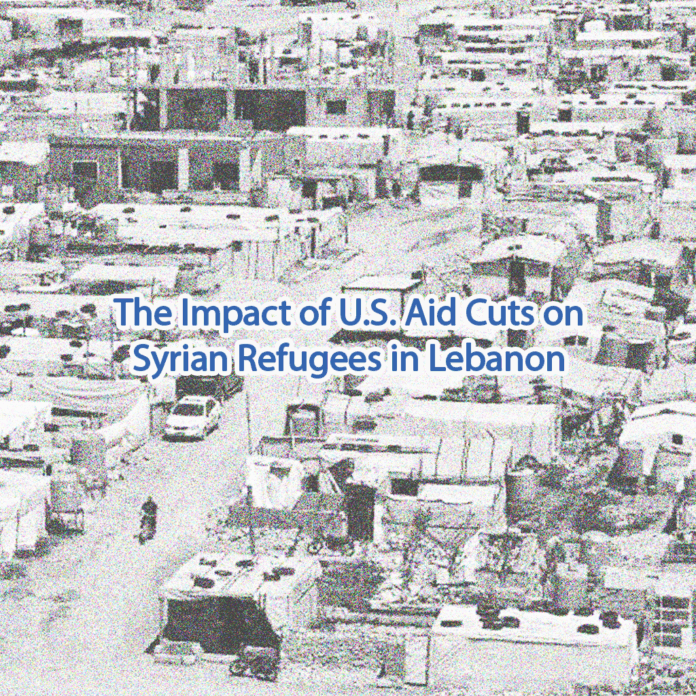Executive Summary
The year 2025 marked a turning point for humanitarian assistance to Syrian refugees in Lebanon. Through Executive Order 14169 and the subsequent Rescissions Act of 2025,[1] the U.S. government froze and rescinded billions in foreign aid, terminating more than 83 percent of USAID programs globally.[2] This decision had an immediate and devastating impact on refugees in Lebanon, in a country already in economic collapse and hosting the highest refugee-to-population ratio in the world.
This report provides a comprehensive analysis of the consequences of these U.S. aid cuts. It draws upon testimonies from Syrian refugees, humanitarian agency reports, and academic analysis to document the ways in which funding reductions undermined survival strategies in the absence of Lebanese government support. The evidence demonstrates that due to these cuts, refugees lost access to food aid, cash assistance, healthcare subsidies, education support, and protection services and that there is still a high need of humanitarian aid support in Lebanon despite the return of the majority of Syrian refugees to Syria.
Refugees now are at higher risk of increased debt, child labour, untreated illnesses, school dropouts, eviction, and other forms of rising insecurity. Humanitarian focused UN agencies, particularly UNHCR, WFP, UNICEF, have been forced to drastically reduce programming due to acute funding shortages. Furthermore, independent medical actors, while not directly funded by USAID, are also facing increased pressure as cuts to other organisations reduce referral pathways and limit the availability of essential services. Refugees themselves have described these cuts as a “death sentence”, with one declaring: “By cutting off aid, you are killing us”. The report concludes that the USAID cuts have not only deepened vulnerabilities but also destabilized the broader humanitarian response in Lebanon. This paper underlines the need for the restoration of USAID funding, diversification of donor support, strengthening of Lebanese institutions, and long-term contingency planning for durable solutions.
This report is based on 20 in-depth interviews conducted with Syrian refugees whose lives were directly affected by the suspension of humanitarian aid following the USAID funding cuts enacted under the second Trump administration. In addition, the study incorporated insights from staff members of humanitarian organizations whose programs were significantly impacted by the withdrawal of USAID funding.
Adopting a qualitative research design, the report relies primarily on direct testimonies from the refugees themselves. All refugee interviews were conducted in Arabic via telephone, in line with participants’ language preferences, logistical constraints, and to ensure the safety and anonymity of interviewees. Staff members of humanitarian organizations contributed through written responses to a set of structured questions, allowing for consistency and comparability across cases.
Following the interviews, data were transcribed and systematically analyzed to identify recurring themes, patterns of impact, and narratives of resilience. To maintain confidentiality and safeguard participants, all individuals were assigned pseudonyms. This approach was chosen to foster trust, enable participants to speak openly, and preserve the integrity and accuracy of the collected data.
In addition to primary data, the report draws on secondary and open-source materials, including publicly available reports, news coverage, and legal documents. These sources were employed to contextualize the testimonies and to deepen the analysis of programmatic disruptions resulting from the aid cuts. Particular attention was given to official announcements by United Nations agencies and organizations directly funded by USAID, in order to triangulate findings and ensure a robust understanding of the broader humanitarian and institutional consequences of the funding withdrawal.
You can browse the report below, or download it to your device.
